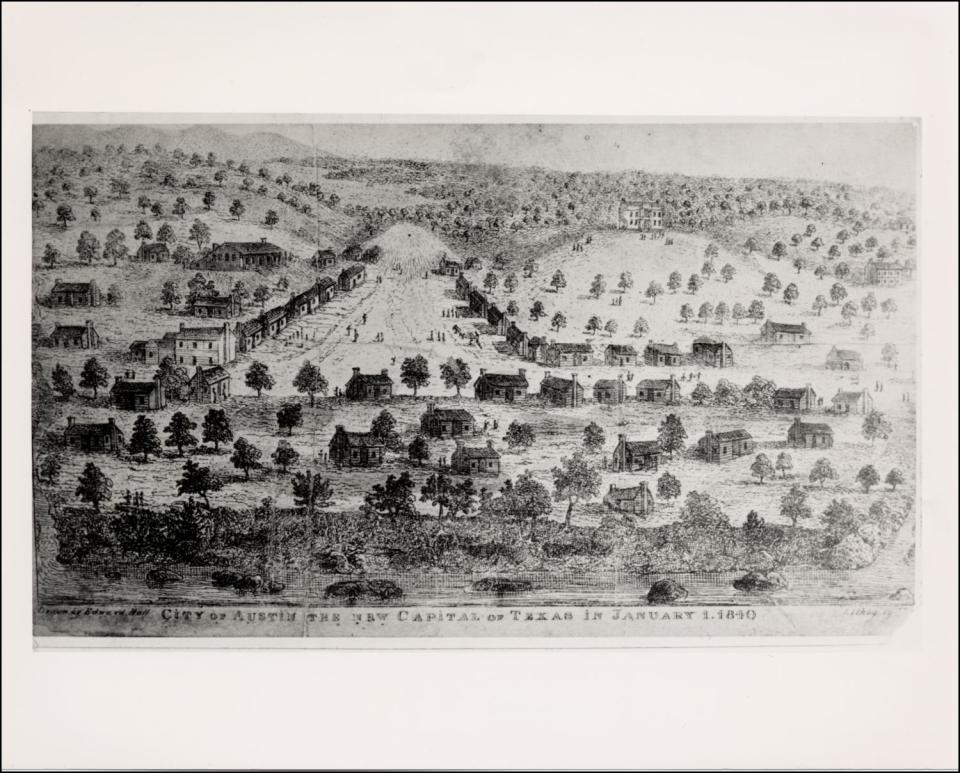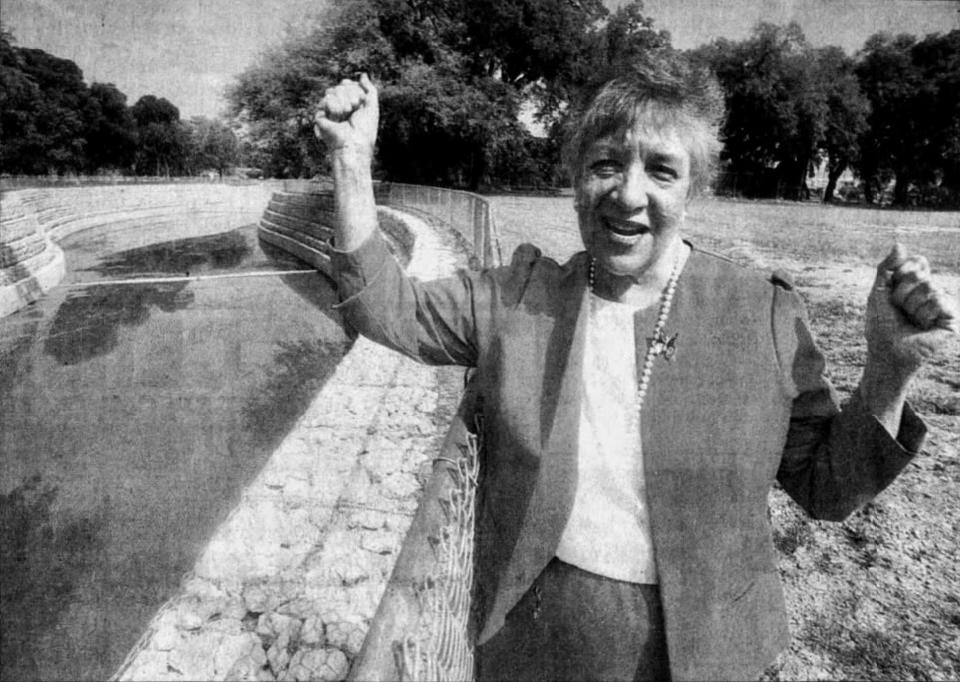From Oak Hill to Clarksville, how did Austin neighborhoods get their names?
- Oops!Something went wrong.Please try again later.
Before glittering skyscrapers outlined downtown and Lady Bird Lake boasted hoards of paddle-boarding tech bros, Texas’ capital city was a quaint village named Waterloo.
Various hypotheses exist for its original name. Whether named for the 1815 battle that ended Napoleon Bonaparte’s conquest of Europe or as a taunt to Mexican president Antonio López de Santa Anna, who called himself “Napoleon of the West”, known historical records do not indicate the rationale behind the choice of name.
Initially settled by just four Anglo-American families, the village was selected to become the infantile Republic of Texas’ capital city in 1839. Favored for its location on the Colorado River, serving as both a trading route and freshwater source, it was renamed for Stephen F. Austin, the leader of the colonizing effort of the Mexican state of Tejas, that same year.
Austin Answered: Austin Answered: Why are so many things in Austin named 'Waterloo'?
Sam Houston, a contemporary of Stephen F. Austin, and inaugural president of the Republic of Texas, declared the new capital “the most unfortunate site upon earth for the seat of government,” perhaps retaining some bitterness over the dethronement of his own namesake city as capital, which legislators perceived a “wretched mudhole.” To add insult to injury, those same politicians also believed the city only had two main draws: prostitution and gambling.

Early urban planning efforts established a fourteen-block square bordered by Waller Creek in the east, and Shoal Creek to the west. North-south streets were named after Texas rivers and the east-west cross streets after Texas trees.
Even in the early 19th century, visitors to the newly established city sang praises of the city’s lush rolling hills and cool limestone-filtered water. According to historian David C. Humphrey, “already the Austin lifestyle had its devotees.”
What’s in a (neighborhood) name? Here's a list of Austin-area neighborhoods and their history:
The Drag
Technically not a neighborhood, but a narrow portion of Guadalupe St., adjacent to West Campus, several hypotheses exist for the name’s origin. Jim Nicar, a UT Austin history hobbyist, told KUT that the name comes from the horse-drawn trolley — transporting professors and students alike — up and down Guadalupe St., and dragging along the busy street.
Pflugerville
Named after Henry Pfluger, who immigrated to the Central Texas region in 1849 with his family, following unrest and political instability in Germany. The town itself was not established until 1860 when fellow German-American William Bohls opened a general store and post office. The two families were further linked when Bohls’ daughter Julia married Pfluger’s son, Martin.
Oak Hill
Established as Live Oak Springs in the early 19th century, the town experienced prosperity in the 1880s, when limestone was harvested from the nearby quarry (now known as the Convict Hill Quarry Park) for the construction of Austin’s Capitol building. The town’s 1884 records counted 75 residents, one general store, and four saloons. The town’s name originates from the Oak Hill post office, which served the town from 1870 to 1910. Oak Hill was incorporated into Austin in 2000.
Govalle
Translating into “good grazing” in a rare Swedish dialect, according to Austin Monthly, Govalle was originally the site of a cattle ranch owned by Swante Magnus Swenson. He was among the first Swedish migrants to Texas, and a friend of Sam Houston, who alongside Swenson, encouraged Swedish migrants to settle in Central Texas. Swenson would eventually become one of the largest landowners in Texas.

Clarksville
Founded by Charles Griffin Clark, a former slave born in Mississippi. Clark established his own freedmen’s town in 1871 when he purchased two acres of land located a half-mile from Austin, from Nathan G. Shelley, a former mayor of Austin and general in the Confederate army. The land had previously belonged to former Texas Governor Elisha Pease, whose Woodlawn Plantation sprawled across 350 acres of woodland outside of Austin proper.
Freedman communities established by former slaves popped up across the South, with many established in Central and East Texas following the Civil War.
Built between 1879 and 1887, the Hezikiah Haskell House at 1703 Waterston Ave., is one of the few remaining original structures, having served as a private home and place of worship in the early years of the town’s establishment.
Clarksville was a predominantly African-American neighborhood for decades until racially motivated policies began to pressure residents to move East, starting with Austin City Council’s 1928 Master Plan, which sought to consolidate all African Americans into one community in East Austin. According to the Texas Freedom Colonies Project, in the 1970s, the remaining members of the community were further pressured by the withholding of public services, such as adequate lighting, sewage systems, and paved streets.
This article originally appeared on Austin American-Statesman: A brief history of how Austin neighborhoods got their names

